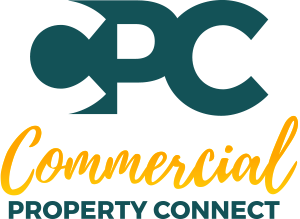It's the Parking, Stupid
It can make or break a deal.
Price?
No, PARKING!
When you embark on the perfect spot for a business there are so many considerations. Who are my customers? Does this space have everything I need to be comfortable? Do I have enough storage? Will my employees like this location? Is the floor plan efficient? I will get so much amazing natural light!
Regardless, if you are a restaurant, a mortgage company, or an electronics producer there is something that is critically important and is the deal breaker more times than you would think. PARKING! You might need parking for clients, employees or maybe just deliveries. Think about it; you must consider people coming to your business, people inside using your business (how long will they be here), employees coming and going from your space and the time of day that all of this is occurring. You need to consider these same factors for any businesses around you that might impact your availability of parking.
Who Decides How Much Parking You Need
Often people think that it is up to them to determine if the parking at a particular building will be adequate for their business. They’ll say, “Oh no, it will be fine! I can manage that because of the way I schedule my clients.” Remember, it is usually not up to you. Most municipalities will have parking requirements dependent on the type of business that you have.
As an example, maybe you own a hair salon, and you are looking at commercial space for your new location. You research what type of zoning will allow you to operate this type of business in the city you are in. Good job! This is a great start.
However, you need to dig a bit further. Most municipalities will have a parking ratio that is required for various types of business. A commercial zoning that allows for “retail” is allowed, but a hair salon might have a different requirement than a restaurant, for instance. Or, a zoning that allows for office use might have a different requirement for medical office use.
Parking Ratios
A parking ratio means the required number of spaces that must be available based on the number of square feet of space you are going to occupy. So, if you see a ratio that says 5:1000, that means that there are 5 spaces for each 1000 square feet. if you were leasing a 2000 square foot space there would be 10 spaces allotted. Or if you were leasing an 800 square foot space there would be 4 spaces allotted. Now here is the kicker: let’s say in your town the zoning says that if you are a hair salon you must have a spot for each 150 square feet of space. That same 800 square foot space would not be adequate, because the zoning says for 800 square feet you would need 5.3 spaces. So even if you think 4 spaces are enough, you do not get to make that decision.
This is something you must consider as you begin looking for your perfect location for your business.
Another Way to Look at the Importance of Parking
When people buy real estate, the saying goes “location, location, location.” No matter the location, parking can be an afterthought. Sometimes the trendy hot areas lack parking.
Let me tell you about a client that we recently helped.
This successful restauranteur had been seeking a site in Tempe to add her latest location. Tempe is an area that enjoys a vibrant business community that gets traffic from college students and families alike. The appeal of this community can make this a pricier area to buy in. Another agent looking at her search from “inside the box” had presented options—primarily former restaurants—and the price tag continually dictated that the move seemed it would never happen. We met this client and she had all but lost hope to launch in this amazing community.
This is how Commercial Property Connect looked outside of the box to solve a common problem…inadequate parking. We found a property that was originally built as a convenience store. The property was about 4700 square feet and had previously been divided into two separate retail spaces, one was about 2000 SF and the other was about 2700 SF. The property currently had 13 parking spaces. Remember how we said previously that sometimes business owners think they can determine if 13 spaces would be enough? This area is fantastic because it enjoys a fair amount of people that use public transportation. Many residents ride their bikes or walk to local hot spots so a business owner could look at this and determine that they could be successful here with 13 parking spaces and they might be right. The reality is: it does not matter! The zoning did allow for a restaurant here BUT it dictated that indoor dining required 1 space for every 75 square feet! This meant that for this location to be a restaurant she would need a minimum of 63 parking spaces! There was no way this would work, right? This client truly only needed about 2000 square feet for her restaurant. For a 2000 square foot restaurant the zoning would require 27 parking spaces.
With the assistance of an architect, it turns out she could utilize the 2000 square foot portion of the structure that sat at one side of the property for the restaurant. She could take down the other 2700 square feet and design the surrounding lot to create 27 parking spaces. While it sounds insane to take valuable retail building space and tear it down to make lines on asphalt, right? But, in this case those parking spaces made the property far more valuable to this client than having the additional 2700 SF of building space. It made the difference for her between finding a property in a competitive part of town for her restaurant and having to miss the boat by locating out of the target area.
The moral of the story here is not to overlook this important factor. Sometimes it is not “location, location, location”, or even “price, price, price”, it might be “PARKING, PARKING, PARKING”.




